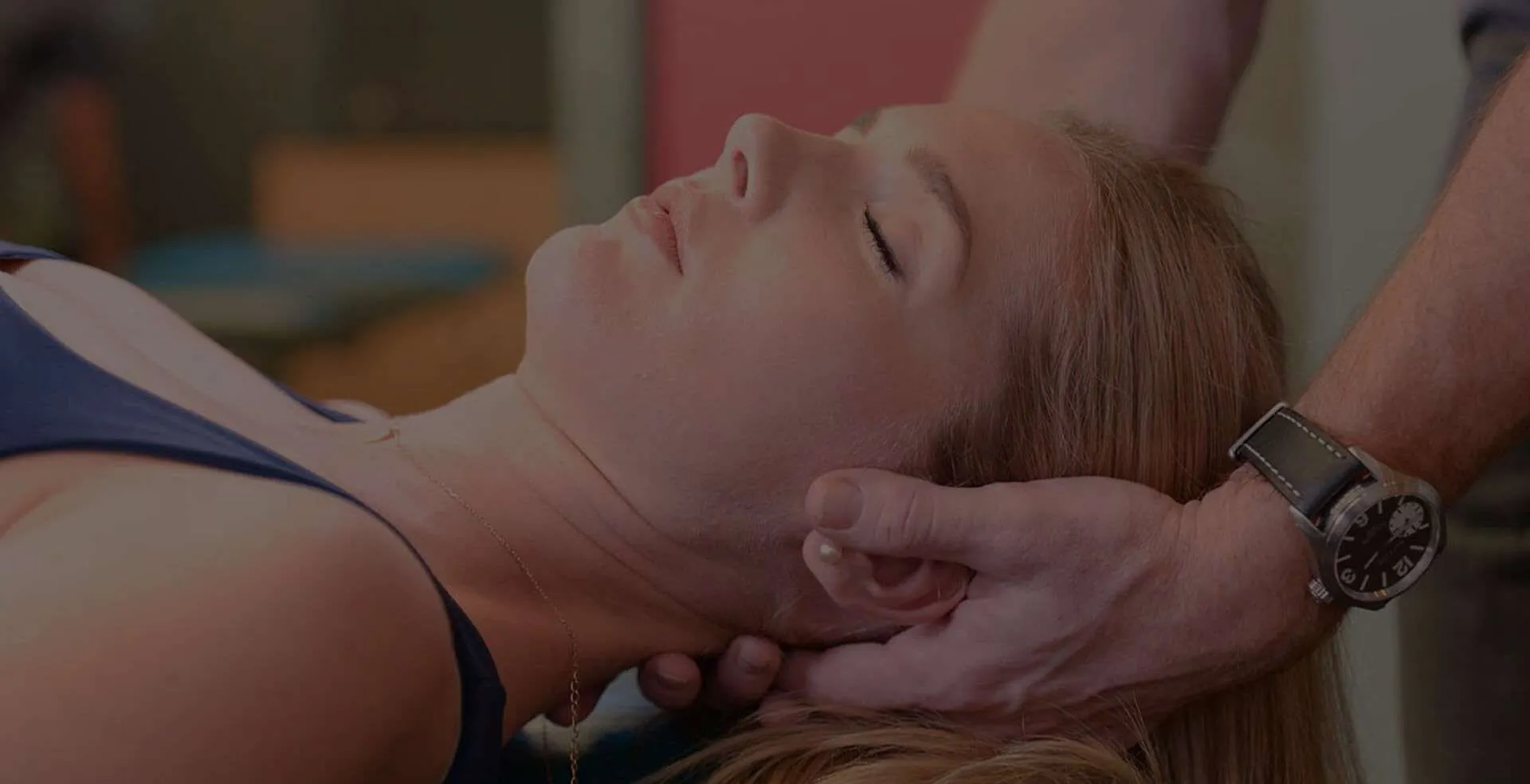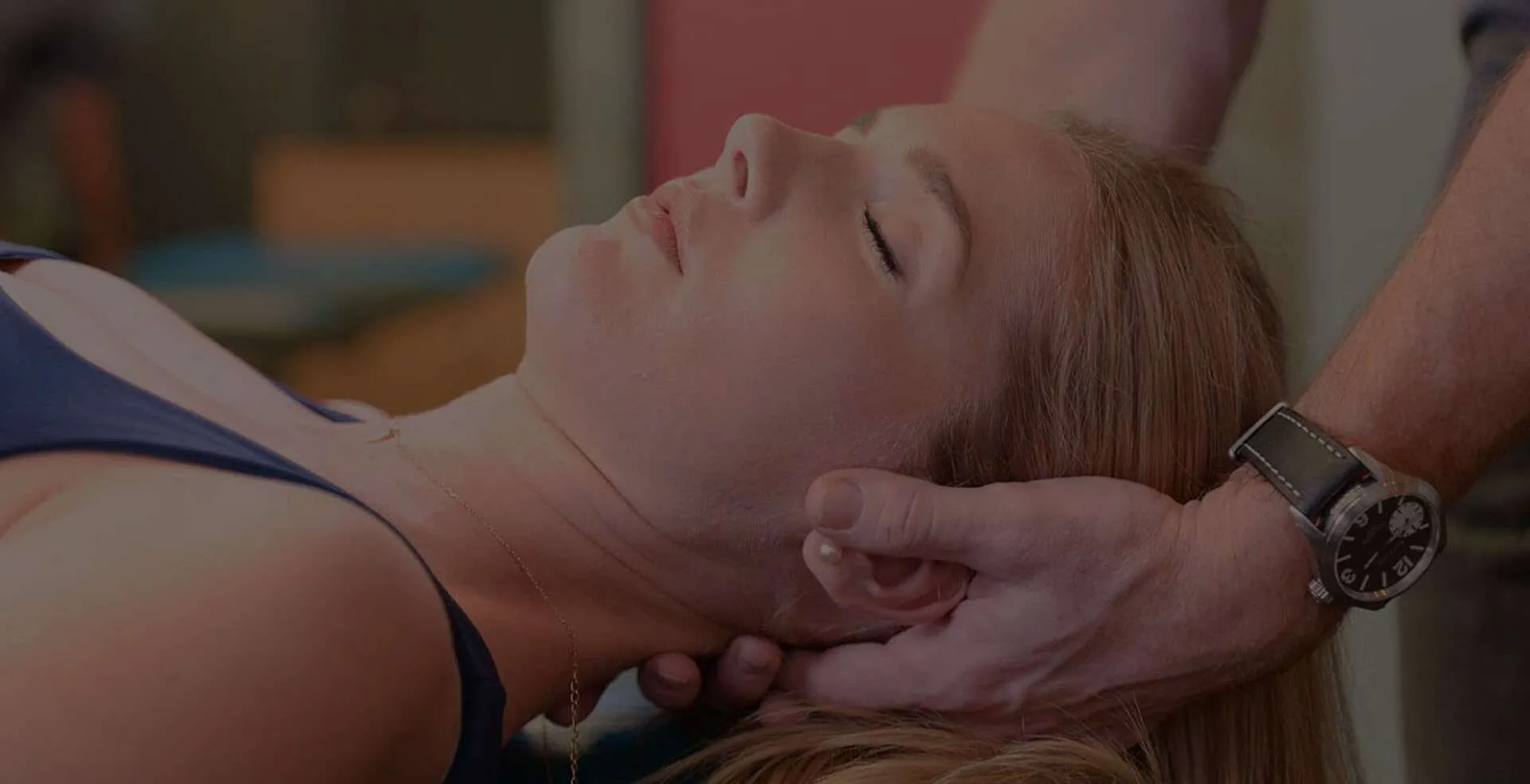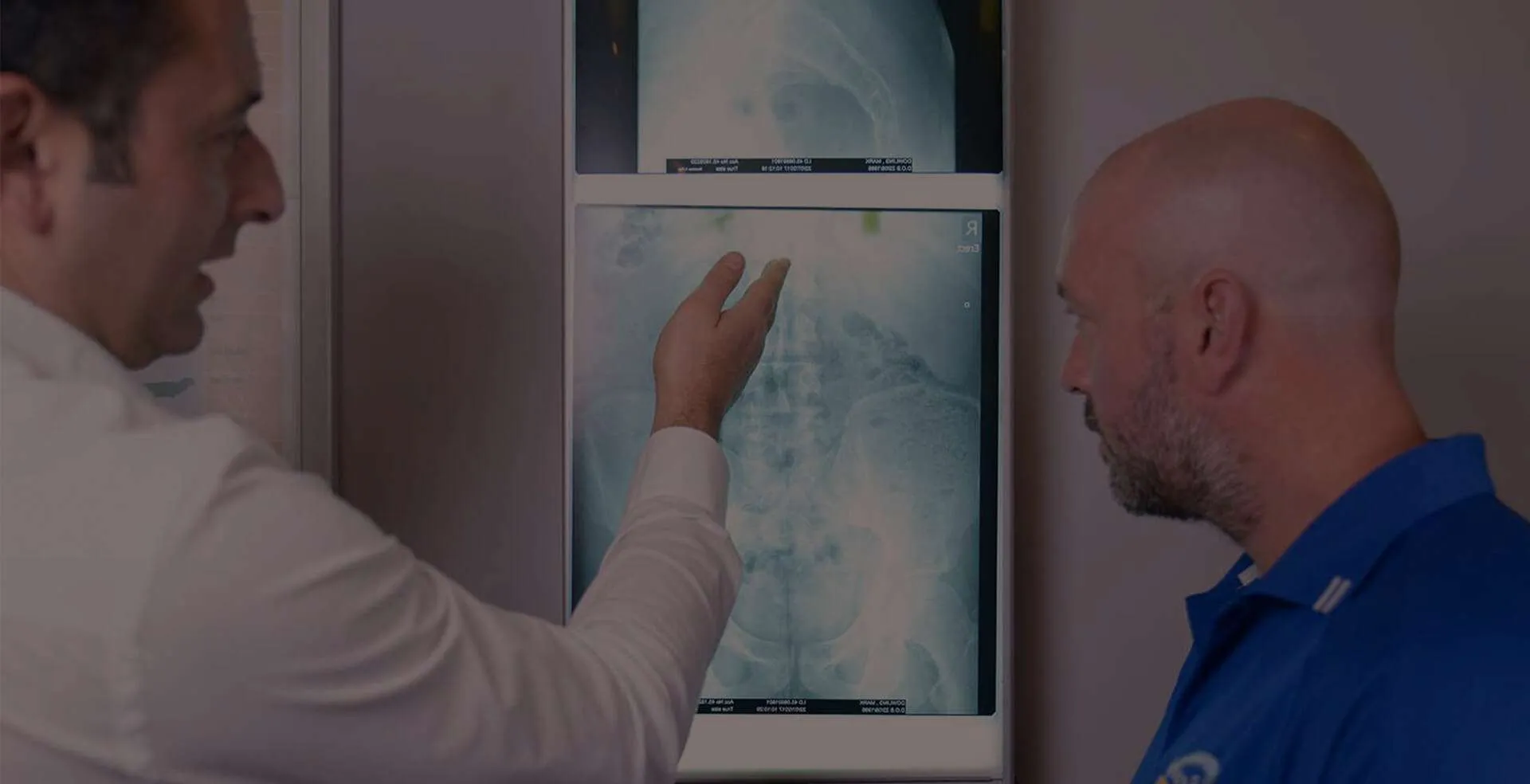Neck Pain: Causes, Symptoms, and Treatments
Neck pain is a common complaint that affects millions of people worldwide, often interfering with daily activities and quality of life. Whether caused by poor posture, injury, or underlying health conditions, persistent neck pain can be both frustrating and debilitating.
Fortunately, chiropractic care offers a non-invasive, drug-free approach to addressing this issue. By focusing on the intricate relationship between the spine, muscles, and nervous system, chiropractors can provide targeted treatments that not only alleviate neck pain but also address its root causes, promoting long-term relief and improved function.

Solutions for Neck Pain
- Lifestyle Modifications
- Hot and Cold Therapy
- Spinal Adjustments
- Soft Tissue Therapies
- Stress Management Therapies
Understanding the Causes of Neck Pain
Neck pain is a concern for individuals across all age groups, with causes varying significantly between younger and older populations.
Younger Adults and Teenagers
For younger adults and teenagers, a modern phenomenon known as “tech neck” has become increasingly prevalent, often requiring specific neck pain treatment. This condition results from prolonged periods of looking down at smartphones, tablets, or laptops, causing strain on the neck muscles and cervical spine. Poor posture during desk work, inadequate ergonomics, and stress-related tension also contribute to neck discomfort in this demographic, leading many to seek neck ache relief.
Older Individuals
In contrast, older individuals often experience neck pain due to age-related degenerative conditions such as cervical spondylosis, where the spinal discs and joints wear down over time. Arthritis in the neck joints, particularly osteoarthritis, can cause stiffness and pain, especially in the morning or after periods of inactivity, necessitating more comprehensive neck pain relief strategies. Additionally, conditions like cervical stenosis, where the spinal canal narrows and puts pressure on nerves, become more common with age.
Common Factors and Injuries
For both age groups, sudden injuries from accidents or sports can lead to acute neck pain, while chronic issues may develop from repetitive motions or long-term postural problems. Understanding these age-specific causes is crucial for developing targeted cervical pain relief approaches and preventive strategies to address pain effectively across the lifespan.
Recognizing the Symptoms of Neck Pain
The intensity of pain can vary greatly, from a mild annoyance to debilitating discomfort, influencing the type of pain relief for neck pain that individuals seek. Recognizing these symptoms early and understanding their potential causes is crucial for seeking appropriate treatment and preventing the condition from worsening, whether through professional care or self-administered techniques.
Early assessment helps prevent minor irritation evolving into long-term dysfunction.
This discomfort can significantly limit the range of motion, making it challenging to turn the head or look up and down. In some cases, individuals may feel a tingling sensation or numbness that radiates down the arms, indicating potential nerve involvement. Various kinds of headaches, especially those originating at the base of the skull, are another frequent companion to neck pain.
Common symptoms include a dull, persistent ache or a sharp, localized pain in the neck region, which may extend to the shoulders or upper back. Many people experience stiffness, particularly upon waking or after prolonged periods in one position, leading them to search for relief for stiff neck.
Grinding or Popping Sensations
Some people report a grinding or popping sensation when moving their neck, which could suggest arthritic changes or misalignment in the cervical spine. In more severe instances, neck pain may be accompanied by balance problems, weakness in the arms or hands, or changes in fine motor skills, such as difficulty writing or buttoning clothes. These symptoms could indicate more serious underlying conditions requiring immediate attention.
Comprehensive Solutions: From Self-Care to Professional Interventions
Neck pain therapy encompasses a wide range of approaches, from simple self-care techniques to specialized chiropractic treatments.
Lifestyle Modifications
One of the first lines of defense against neck discomfort is making lifestyle modifications. Improving posture, especially when using electronic devices or working at a desk for extended periods, can significantly reduce strain on neck muscles. Ergonomic adjustments to workspaces, such as raising computer screens to eye level and using supportive chairs, complement the postural advice that chiropractors often provide as part of their neck pain treatment plans.
Regular exercise and stretching play a crucial role in both preventing and alleviating neck pain. Gentle neck stretches, shoulder rolls, and chin tucks can help improve flexibility and strength in the cervical region. Chiropractors can guide patients through specific exercises tailored to their condition, ensuring proper form and maximum benefit. They may also recommend yoga or Pilates as forms of exercise that focus on posture, alignment, and core strength, all of which contribute to a healthier neck.
Hot and Cold Therapy
For immediate relief, many find success with hot and cold therapy, techniques often endorsed by chiropractors. Applying heat can help relax tense muscles and improve blood circulation, while cold packs can reduce inflammation and numb pain. Chiropractors may use these therapies in-office and provide guidance on how to effectively use them at home as part of a comprehensive neck pain therapy approach.
Spinal Adjustments
At the core of chiropractic care for neck pain are spinal adjustments. These precise manipulations help realign the vertebrae in the cervical spine, reducing pressure on nerves and restoring proper function. Chiropractors use various techniques, from gentle mobilizations to more forceful adjustments, depending on the patient’s condition and comfort level. These adjustments can provide immediate relief and, over time, contribute to long-term healing.
Soft Tissue Therapies
In addition to spinal adjustments, chiropractors often incorporate soft tissue therapies into their neck pain treatment plans. Techniques such as myofascial release, trigger point therapy, and therapeutic massage can help relax tense muscles, improve circulation, and reduce inflammation in the neck area. These therapies complement both spinal adjustments and the patient’s own self-care efforts at home.
Stress Management Therapies
Stress management is another important aspect of neck pain prevention and treatment. Techniques such as deep breathing exercises, meditation, or progressive muscle relaxation can help reduce tension in the neck and shoulder muscles. Chiropractors often provide guidance on these stress-reduction techniques as part of their holistic approach to neck sprain treatment.
Additional Lifestyle Factors
Lifestyle factors such as maintaining a healthy weight, staying hydrated, and getting adequate sleep on a supportive pillow are also crucial for neck health. Chiropractors can provide advice on choosing the right pillow and sleeping position to prevent neck strain. They may also offer nutritional guidance to support overall musculoskeletal health. For those with desk jobs or who frequently use mobile devices, taking regular breaks and practicing neck exercises throughout the day can prevent the onset of pain. Chiropractors can teach patients specific exercises and stretches to do during these breaks, helping to counteract the effects of prolonged static postures.
Other Neckache Treatments and Multidisciplinary Approaches
In some cases, chiropractors may recommend more advanced treatments such as spinal decompression therapy for patients dealing with chronic neck pain. This non-invasive treatment gently stretches the spine, creating negative pressure within the discs, which can help relieve pressure on pinched nerves and promote healing.
Stress Management
Stress management is another important aspect of neck pain prevention and treatment. Techniques such as deep breathing exercises, meditation, or progressive muscle relaxation can help reduce tension in the neck and shoulder muscles. Chiropractors often provide guidance on these stress-reduction techniques as part of their holistic approach to neck sprain treatment.
Multidisciplinary Collaboration
For patients with more complex cases, chiropractors can work as part of a multidisciplinary team, collaborating with other healthcare professionals to ensure comprehensive care. This integrated approach can be particularly beneficial for patients with chronic or severe pain.
Proactive Neck Pain Management
Effective management of neck pain often involves a combination of lifestyle changes and professional chiropractic care. By adopting healthier habits, practicing good posture, engaging in regular exercise, and seeking targeted chiropractic treatments, most people can find significant relief and improve their overall quality of life.
Therapeutic Approaches for Specific Conditions
A variety of therapeutic approaches are available, tailored to specific conditions and causes. For those seeking treatment for a pinched nerve in the neck, chiropractic care offers targeted spinal adjustments that can help relieve pressure on affected nerves. These precise manipulations aim to realign the vertebrae, creating more space for nerve roots and reducing inflammation.
Complementary Therapies and Neck Muscle Sprain Treatment
Complementary therapies such as spinal decompression may also be employed, gently stretching the neck to promote healing and alleviate nerve compression. For individuals dealing with neck muscle sprain, a combination of rest, gentle exercises, and manual therapies often proves effective. Chiropractors may use soft tissue techniques like massage or myofascial release to reduce tension and promote blood flow to the affected area.
Neck Muscle Strain Treatment
Similarly, neck muscle strain treatment focuses on reducing pain and inflammation while promoting healing of the damaged tissues. This may involve a multi-faceted approach including gentle mobilization techniques, therapeutic ultrasound to stimulate healing at the cellular level, and electrical stimulation to control pain and reduce muscle spasms.
Chiropractors often work with patients to identify and correct postural issues or repetitive motions that may have contributed to the strain, incorporating ergonomic advice and lifestyle modifications into the treatment plan.
Patient Education
Regardless of the specific condition, whether it’s a pinched nerve or muscle strain, patient education plays a crucial role in the healing process. Chiropractors provide guidance on proper posture, ergonomic adjustments at work and home, and exercises that can be performed regularly to strengthen the neck muscles and improve flexibility. They may also offer advice on stress reduction techniques, recognizing the impact that tension can have on neck pain.
Multidisciplinary Approach for Chronic Conditions
In some cases, particularly for chronic conditions or severe pain, a multidisciplinary approach may be recommended. This could involve collaboration with physical therapists, massage therapists, or even acupuncturists to provide comprehensive care. The goal is always to address not just the symptoms but the underlying causes of neck pain, promoting long-term health and preventing recurrence.
By combining these various therapeutic approaches – from specific treatments for pinched nerves to comprehensive strategies for muscle sprains and strains – chiropractors can offer personalized care that addresses the unique needs of each patient.
This holistic approach to neck pain therapy not only provides relief from immediate symptoms but also equips patients with the knowledge and tools to maintain a healthy neck for years to come.
Dealing With Neck Pain - Summary
Chiropractic care provides a drug-free solution, addressing the spine, muscles, and nervous system to relieve pain and improve function. Chiropractors offer various neck ache treatments, including spinal adjustments, ergonomic advice, and exercises to strengthen and stretch the neck.
They also use therapies like hot and cold treatments, soft tissue massages, and stress reduction techniques. For severe cases, advanced treatments such as spinal decompression are available.
Education on proper posture and lifestyle changes is essential for preventing future pain. Chiropractors often work with other healthcare professionals to provide comprehensive care tailored to individual needs. This holistic approach ensures not only immediate relief but also long-term neck health.
Neck Pain

How to Know If Shoulder Pain Is Serious?
Shoulder pain is a common complaint that can stem from various causes, ranging from minor strains t...
Pregnancy Back Pain: Chiropractic Relief
Pregnancy is indeed something to be happy about—the joy of creating an entirely new human being who...
The Main Reasons for Lower Back Pain
You’ve probably experienced some form of lower back pain, regardless of your age. Some of it is act...
Here’s Why Chiropractic Care Is Effective for Back Pain
Back pain is a pervasive issue affecting millions worldwide, and most of us have probably experienc...
Back Pain

How to Know If Shoulder Pain Is Serious?
Shoulder pain is a common complaint that can stem from various causes, ranging from minor strains t...
Pregnancy Back Pain: Chiropractic Relief
Pregnancy is indeed something to be happy about—the joy of creating an entirely new human being who...
The Main Reasons for Lower Back Pain
You’ve probably experienced some form of lower back pain, regardless of your age. Some of it is act...
Here’s Why Chiropractic Care Is Effective for Back Pain
Back pain is a pervasive issue affecting millions worldwide, and most of us have probably experienc...
Disc Pain

How to Know If Shoulder Pain Is Serious?
Shoulder pain is a common complaint that can stem from various causes, ranging from minor strains t...
Pregnancy Back Pain: Chiropractic Relief
Pregnancy is indeed something to be happy about—the joy of creating an entirely new human being who...
The Main Reasons for Lower Back Pain
You’ve probably experienced some form of lower back pain, regardless of your age. Some of it is act...
Here’s Why Chiropractic Care Is Effective for Back Pain
Back pain is a pervasive issue affecting millions worldwide, and most of us have probably experienc...
Shoulder Pain

How to Know If Shoulder Pain Is Serious?
Shoulder pain is a common complaint that can stem from various causes, ranging from minor strains t...
Pregnancy Back Pain: Chiropractic Relief
Pregnancy is indeed something to be happy about—the joy of creating an entirely new human being who...
The Main Reasons for Lower Back Pain
You’ve probably experienced some form of lower back pain, regardless of your age. Some of it is act...
Here’s Why Chiropractic Care Is Effective for Back Pain
Back pain is a pervasive issue affecting millions worldwide, and most of us have probably experienc...
Spine Pain

How to Know If Shoulder Pain Is Serious?
Shoulder pain is a common complaint that can stem from various causes, ranging from minor strains t...
Pregnancy Back Pain: Chiropractic Relief
Pregnancy is indeed something to be happy about—the joy of creating an entirely new human being who...
The Main Reasons for Lower Back Pain
You’ve probably experienced some form of lower back pain, regardless of your age. Some of it is act...
Here’s Why Chiropractic Care Is Effective for Back Pain
Back pain is a pervasive issue affecting millions worldwide, and most of us have probably experienc...
